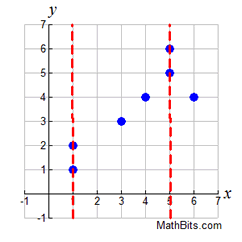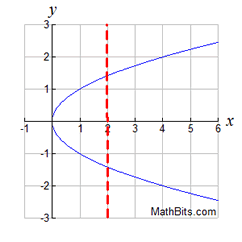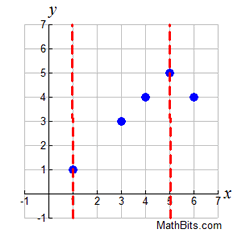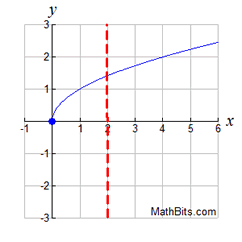Can a Function Have the Same Y Values
|
Whatsoever set of ordered pairs may exist used in a relation.
If yous add a "specific rule" to a relation, you lot get a role.
Let's adjust our previous examples so they fit the part "definition".
Given that relation A = {(4,3), (k,5), (7,-3), (iii,2)}. Which of the following values for chiliad will make relation A a role?a) 3 b) 4 c) 6 Solution: Choice c. The x-values of three and 4 are already used in relation A. If they are used once more (with a different y-value), relation A will not be a function. Which of the post-obit graphs represents a function? Solution: Choice b. A vertical line fatigued on this graph volition intersect the graph in just ane location, making it a function. Vertical lines on the other three graphs volition intersect the graph in more one location, or as in role a, will intersect in an infinite number of points (all points).
When you desire to graph lines, you 1. solve the equation for "y =", produce a chart of points (a T-chart), and plot, or Past solving for "y =", you are actually identifying a "function". If y'all tin solve an equation for "y =", then the equation is a "office". Most calculators (including the TI-84+ series) tin can but handle graphing functions. BUT ... what about y 2 = x ? Notation: The re-posting of materials (in part or whole) from this site to the Net is copyright violation |
Source: https://mathbitsnotebook.com/Algebra1/Functions/FNFuncBasics.html







0 Response to "Can a Function Have the Same Y Values"
Post a Comment